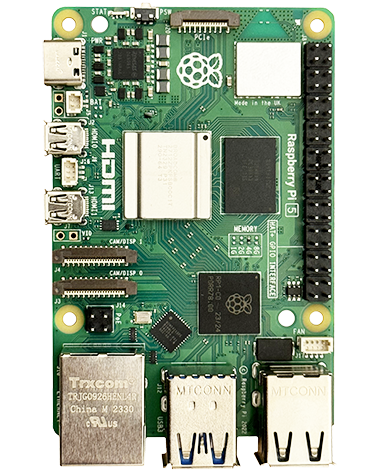Installing MySQL
If you want MySQL also do the following:
sudo apt-get install mysql-server
sudo apt-get install php5-mysql
The php5-mysql install adds the mysql libraries to allow PHP to access the mysql database.
Accessing MySQL from the command line
First connect to the database and specify a user:
mysql -p -u root
Then enter the users password when prompted. You should now have a mysql> prompt.
Exiting MySQL connection / command line login
quit
Restarting The MySQL service
sudo service mysql restart
Creating A Database
Fist connect to the database using "mysql -p -u root". To create a database:
CREATE DATABASE MY_DATABASE_NAME;
Adding A User
Login to mysql using "mysql -p -u root" and then create a new user to avoid using root:
CREATE USER 'MY_USERNAME'@'localhost' IDENTIFIED BY 'MY_PASSWORD';
Accessing a database
Local Access
For security reasons, by default access to the MySQL server via the main IP address is disabled in the MySQL config. You can connect locally using:
localhost
127.0.0.1
or the internal socket connection on "/var/run/mysqld/mysqld.sock"
Remote Access
First we need to edit the MySQL config:
sudo nano /etc/mysql/my.cnf
Find the configuration line called bind-address. By default this is set to 127.0.0.1.
This is the local address(es) / network adaptors that MySQL will listen for connections on. The RPi default is 127.0.0.1 for localhost only. To allow connection on all interfaces set it to "0.0.0.0"
Set it to "0.0.0.0" and save the file
sudo service mysql restart
To grant access for a remote connection, login to mysql using "mysql -p -u root" and then create a new user to avoid using root:
CREATE USER 'MY_USERNAME'@'localhost' IDENTIFIED BY 'MY_PASSWORD';
To allow access from any IP address
GRANT ALL PRIVILEGES ON MY_DATABASE_NAME.* TO 'MY_USERNAME'@'%' IDENTIFIED BY 'MY_PASSWORD';
flush privileges;
To allow access from a fixed IP address
GRANT ALL PRIVILEGES ON MY_DATABASE_NAME.* TO 'MY_USERNAME'@'12.34.56.78' IDENTIFIED BY 'MY_PASSWORD';
flush privileges;
Changing MySQL root User Password
See here.
Copy Database To/ From A Remote Server
Insecure Method
If you have direct access to the remote server and aren't worried about security
mysqldump -h [server] -u [user] -p[password] [databasename] | mysql -h [server] -u [user] -p[password] [databasename]
Note: There is NO space between -p and [password]
The left side is the from, the right side is the to. [server] can be localhost on either side.
Secure Method
If you can SSH into the remote server you can use this
mysqldump -h [server] -u [user] -p[password] [databasename] | ssh [ssh_username]@remote_domain.com mysql -u [user] -p[password] [databasename]
You will then be promoted for the ssh password of the remote server
Copy A Single Database Table To/From A Remote Server
Insecure Method
If you have direct access to the remote server and aren't worried about security
Its the same method as for copying an entire database except that you specify the tablename after the from database name:
mysqldump -h [server] -u [user] -p[password] [databasename] [tablename] | mysql -h [server] -u [user] -p[password] [databasename]
If the table already exists it is overwritten.
Using SSL For Database & Table Copy
See this guide here.
In theory using the –ssl option with mysqldump enables the connection over ssl but we've not verified this and it doesn't look like you get errors for domains with no SSL certificate setup so maybe this option is only good if you've alread ensure SSL is available?:
mysqldump --ssl


5 years ago
I have the same problem here
E: Package 'mysql-server' has no installation candidate5 years ago
Linux raspberrypi 4.19.93-v7+
pi@raspberrypi:~ $ sudo apt-get install mysql-server
Reading package lists… Done
Building dependency tree
Reading state information… Done
Package mysql-server is not available, but is referred to by another package.
This may mean that the package is missing, has been obsoleted, or
is only available from another source
However the following packages replace it:
mariadb-server-10.0
E: Package ‘mysql-server’ has no installation candidate
5 years ago
As mentioned here – https://raspberrypi.stackexchange.com/questions/100232/how-do-i-build-qts-mysql-plugin-on-raspbian-buster, I think you could try installing mariadb + mysql compatibility patches
10 years ago
Hi, my Raspberry, i dont know why, says me this:
Job for mysql.service failed. See ‘systemctl status mysql.service’ and ‘journalctl -xn’ for details.
invoke-rc.d: initscript mysql, action “start” failed.
dpkg: error processing package mysql-server-5.5 (–configure):
subprocess installed post-installation script returned error exit status 1
dpkg: dependency problems prevent configuration of mysql-server:
mysql-server depends on mysql-server-5.5; however:
Package mysql-server-5.5 is not configured yet.
dpkg: error processing package mysql-server (–configure):
dependency problems – leaving unconfigured
Errors were encountered while processing:
mysql-server-5.5
mysql-server
E: Sub-process /usr/bin/dpkg returned an error code (1)